Model Lost Entire Lips in Pitbull Attack, And She Reflects on Her Recovering Journey

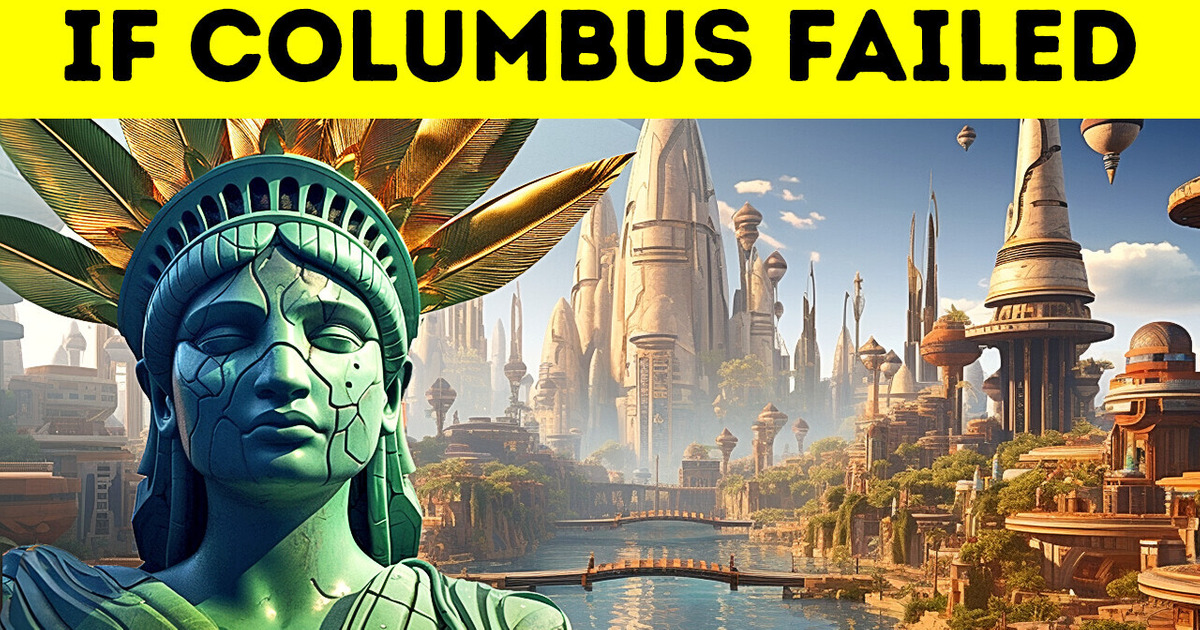
It was hot in the tropics. A type of heat unknown to the men aboard the Ninã, the Pinta, and the Santa Maria ships, led by Italian explorer Christopher Columbus. It had been months since these men left their home cities in Europe.
And until then, Europe was all they knew. They were given a difficult and even dangerous task. Spain hired Columbus to find a New Western Route to Asia. They needed new routes for trading and buying spices. But it was far from a simple job.
I mean, crossing the ocean never is. Little did those sailors know that their lives were about to change forever! “Land in sight!”, someone must have shouted on board. But when they finally stepped on that new foreign land, they discovered they were not in Asia. They had landed in the Americas.
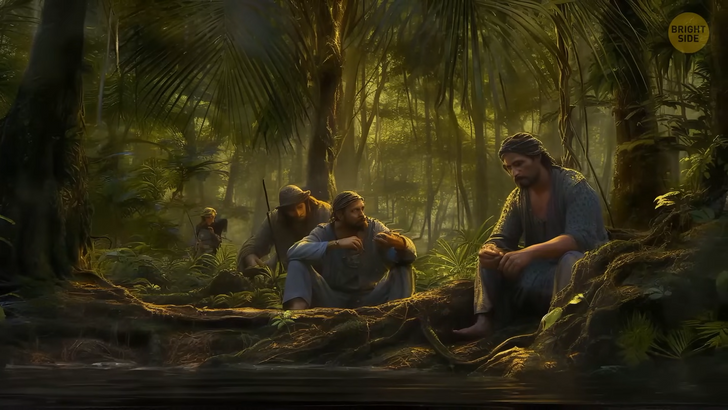
You’ve probably heard this tale before. Historically speaking, Columbus arrived in the Americas in fourteen ninety-two. But what would have happened if Columbus’s ship had faced a lethal storm in the Atlantic Ocean and never made it to the New Land? What would today’s history look like?
First things first. Nobody discovered anything. When we say that the Americas were discovered, we’re kind of ignoring the millions of people who already lived here. You see, the Americas were only discovered from Europe’s point of view. Columbus would only have discovered something if when he got there he was faced with acres and acres of empty land. But that was not the case at all.
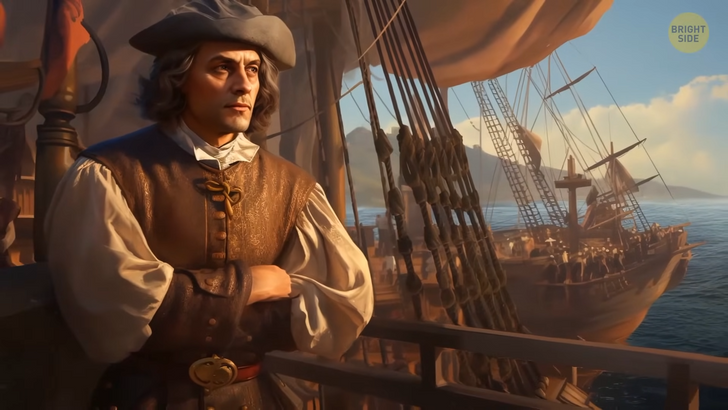
Second, Columbus was not the first explorer to land in the Americas. Believe it or not, but the Vikings approached American shores in the tenth Century. Their expeditions have been well-documented and accepted by scholars. Here’s what might have happened. Around the year a thousand C.E., Viking explorer Leif Erikson sailed to a place called “Vinland”. Cute name, huh? It’s now a region in Canada called Newfoundland. But his crew didn’t stay too long.
They arrived to find ten Native Americans napping under their overturned canoes. They attempted some trade, but I’m guessing the Vikings weren’t too friendly, and the Americans didn’t really like them. The Viking’s account of the encounter shows they felt outnumbered and menaced, so they sailed away back to their land. That makes sense, right? As I said earlier, there were millions of people living in the ginormous continent of the Americas. Any foreigner would be outnumbered there.
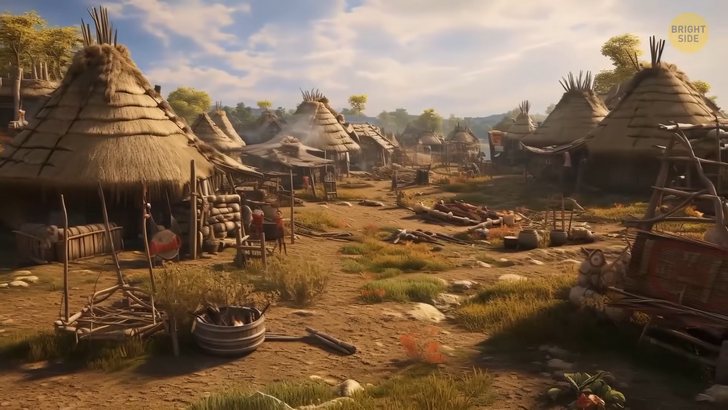
Now, take a look at what North America looked like before our buddy Chris got there. It was not divided into the normal states we are used to. And if Columbus had never arrived, the United States would probably never have been united to begin with. After all, there were hundreds of First Americans living in these lands, and they lived amongst their own tribes. Quite different from the Europeans.
It’s not accurate to think that there were no political systems going on in the Americas before the Europeans arrived. We just need to understand that they were different from what we are used to today. When Europeans arrived, they imported their belief systems with them. From religious beliefs and language systems, to things as simple as clothing habits.
If the Americas had developed on their own, maybe their sense of fashion would be completely different today. You see, Europeans had a developed sense of fashion by the time they arrived West. They wore things such as this and this. But those don’t really work in the tropics, do they? For them, fashion had to do with showing a certain economic status. While in the Americas, that didn’t exist.
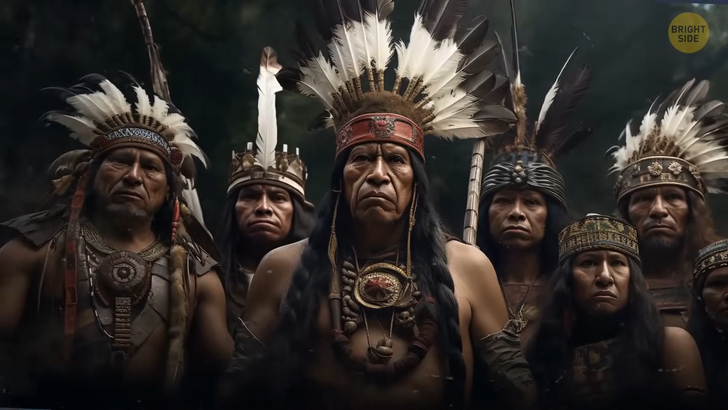
For Native Americans, clothing was mainly functional and related to the weather. In warmer climates, native people would wear short-like cloths to cover their intimate parts. They would walk bare-chested and use shoes known as moccasins (yes, similar to the moccasins you probably own). In colder climates, they would resort to using leather and fur parkas. Of course, there was always the special clothing used for ceremonial purposes. So I’m guessing that if Columbus never reached the Americas, brands such as The GAP, Hollister and Forever Twenty One would never have existed. But we could live with that, couldn’t we?
Here’s a wild thought. Let’s say that by the seventeen hundreds, Native Americans had developed complex engineering skills. They built big boats, maybe a bit smaller in size than the traditional European ships, and decided to venture across the ocean. Let’s say they were the ones who arrived at European shores. In places such as Spain and Portugal.
They carried gifts and goods with them for trading, of course. This was also a common practice amongst them back home, known as potlatch. Sure, they were received with suspicion by the Europeans, who had only ever traded with Asia. But with this inverted encounter, a different type of relationship began between Native Americans and Europeans.
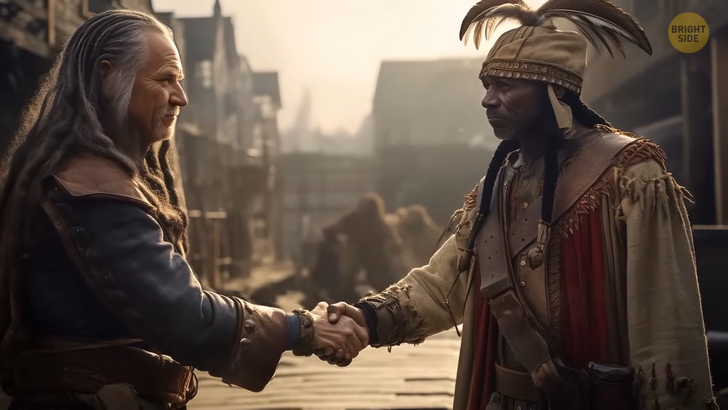
Since Europeans didn’t claim ownership of the Americas, the people from the so-called New Land weren’t considered inferior to them. Actually, they stood side by side as equals, each one with their own power and set of knowledge. Native Americans taught Europeans a new type of ruling system. A more decentralized one. So modern-day structures of government would look really different! Maybe Europeans decided that four years was a long time for someone to hold decision power, so they implemented smaller and more frequent elections.
Oh, and the landscape of European cities also changed a lot. Instead of huge statues made of copper and bronze, showing men in ships on their way to the Americas, the Europeans built Totem poles, in honor of their alliances with First Americans.
In terms of medical and medicinal knowledge, they had a lot to exchange about. While Europeans were making advances in traditional medicine, Americans had developed an impressive knowledge of herbs that could heal a series of things. Before they knew it, Europeans were selling different varieties of plants in their pharmaceutical establishments.
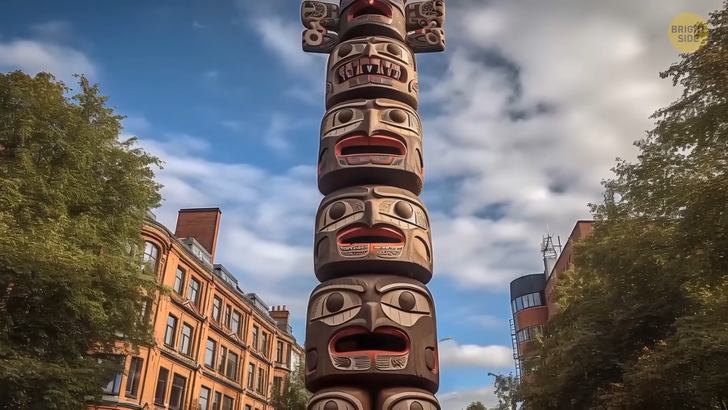
They had one big barrier, though: language. Since Europeans never arrived at American shores, they also never taught their language to Americans. So maybe in this scenario, both cultures brought in their best linguists and tried creating a new language from scratch. Something that could be comprehensible from both perspectives and that could encompass both of their world views.
The implications of this on modern-day life would be really profound if you stop to think about it. Let’s say that this newly created language involved some symbols and drawings in it. You see, Native Americans often told stories using symbols known as pictograms. They were quite literal sometimes. As you can see, a mountain was represented by, well, a mountain. It’s crazy to think that this system of communication has been around for five thousand years, since it was actually invented by the Sumerians.
And hey, maybe even our laptop keyboards would come equipped with these symbols, and you could write more visually hybrid and fun emails than the ones you write today. The American landscape would have also changed. You see, if neither Columbus nor any of the other European dudes that went after him reached the so-called New Land, Central and Latin American cities would look completely different than they do today.
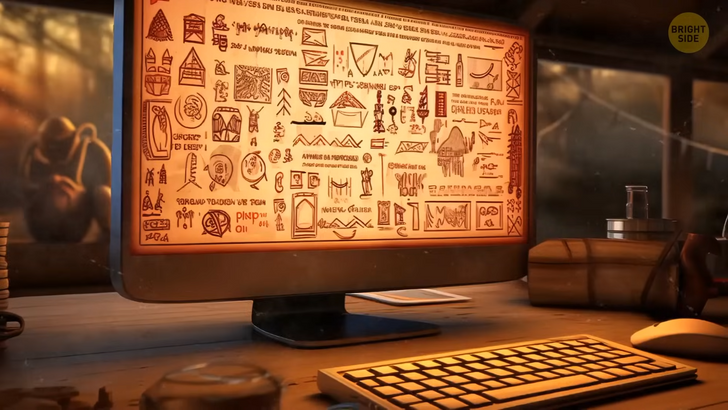
Maybe the bustling empires of the time, such as the Inca, the Maya, and the Aztec would have grown immensely. To be fair, they were already pretty big by the time the Europeans got there. Some pre-Columbian Maya cities were as big as medieval London and Paris in terms of population.
But oh, my. The Maya empire would have grown so much that it could have spread out over all of Central America. They could have developed their pyramid-building craft up to the point that they managed to build an even larger pyramid than the Giza Pyramid in Egypt. So tourists would come from all over the world to visit.
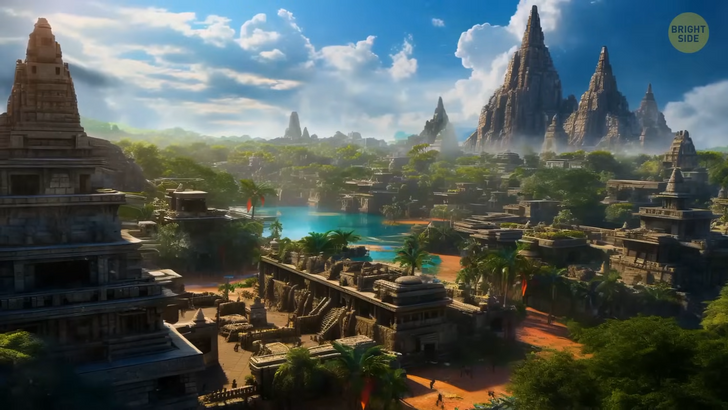
Ah, and in South America, let’s just say the region could have turned into a huge forest, bigger than the Amazon. The Inca could have spread through the Andes and then into the mainland.
Places such as Brazil and Argentina never existed. But in their place, there would have been dreamy tropical settlements, which would have become a worldwide reference in sustainable living.











